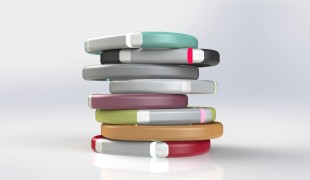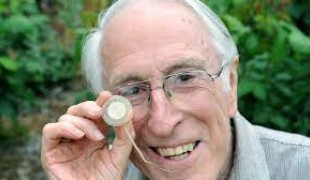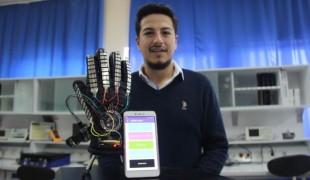- 9923
- 623
- 11
- 11
- 0
- Help Ukraine
About the solution
The device can be used with any set of headphones, and was created to first test hearing by playing several different sounds at seven different frequencies through the headphones. It then programs itself to be a hearing aid, amplifying volume based on the test results. Each device has an audio file of the sound of hands rubbing together. To calibrate it, a person just has to rub their own hands together and match the volume of the audio file with the volume of their own hands.
After visiting his grandparents, the boy was tasked with helping his grandfather get tested and fitted for a hearing aid. But Mukund realized the process was to expensive and difficult. So he decided to take action.
“Since audiologists are specialists, even finding and getting an appointment with one in India was really hard. We spent about $400 or $500 on doctor’s appointments and about $1,900 on the hearing aid itself”, he observed.
Mukund was 14 years old when he started creating the device, and it took him two years to finish it. He taught himself to code. The production cost about 60 USD. According to the student, the processor which amplifies volume by increasing the volume of an incoming signal, was the most expensive part – about USD 45. Other parts cost about USD 15.
“Unlike with traditional hearing aids, if the ear piece gets damaged it is not costly to replace. You just buy another set of ear buds. In its current form, the device is about two inches and looks like a computer processor”, the inventor explained.
Mukund won first place at the Kentucky State Science and Engineering Fair, and aims to distribute his invention to people with hearing loss who can not afford a USD 1,000 hearing aid. Several foundations are contacting him and trying to help the teenager mass produce and distribute it.
“Keeping my grandfather in my mind was what kept me going”, the boy concluded.
Adapted from: http://bit.ly/2j0xP28
What about you, do you have any solutions? Please share them with the Patient Innovation community!
https://www.youtube.com/watch?v=ezthNpwcwP0
This solution shall not include mention to the use of drugs, chemicals or biologicals (including food); invasive devices; offensive, commercial or inherently dangerous content. This solution was not medically validated. Proceed with caution! If you have any doubts, please consult with a health professional.
DISCLAIMER: This story was written by someone who is not the author of the solution, therefore please be advised that, although it was written with the utmost respect for the innovation and the innovator, there can be some incorrect statements. If you find any errors please contact the patient Innovation team via info@patient-innovation.com
-
-
665
-
1
-
12519

Man invents wristband to help deaf people be more aware of their surroundings
COMMUNICATION: Communicating, whether by speaking, listening, or other means
Social interaction
Congenital Deafness
Assistive Daily Life Device (to help ADL)
5 Senses support devices: (glasses, hearing aids, headphones...)
AI algorithm
Difficulty speaking or understanding speech
Cognitive impairment
Confusion
Sensory disturbances (e.g., hypersensitivity to touch, temperature changes)
Regaining sensory function
Promoting inclusivity and social integration
Improving Speech and Communication
Otorhinolaryngology
South Africa
-
-
-
290
-
0
-
3312

Professor Graeme Clark invented the Cochlear Implant
COMMUNICATION: Communicating, whether by speaking, listening, or other means
Listening to music
Congenital Deafness
5 Senses support devices: (glasses, hearing aids, headphones...)
Hearing loss or ringing in the ears (tinnitus)
Regaining sensory function
Promoting self-management
Improving Speech and Communication
General and Family Medicine
Neurology
Otorhinolaryngology
Australia
-
-
-
405
-
2
-
4742

Student invents glove that translates sign language into text
COMMUNICATION: Communicating, whether by speaking, listening, or other means
Social interaction
Blindness
Visual Impairment
Hearing Disorders
Congenital Deafness
Speech Disorder
App (Including when connected with wearable)
Body-Worn solutions (Clothing, accessories, shoes, sensors...)
5 Senses support devices: (glasses, hearing aids, headphones...)
Vision problems
Difficulty speaking or understanding speech
Hearing loss or ringing in the ears (tinnitus)
Regaining sensory function
Promoting inclusivity and social integration
Improving Speech and Communication
Neurology
Ophthalmology
Otorhinolaryngology
Turkey
-
 en
en